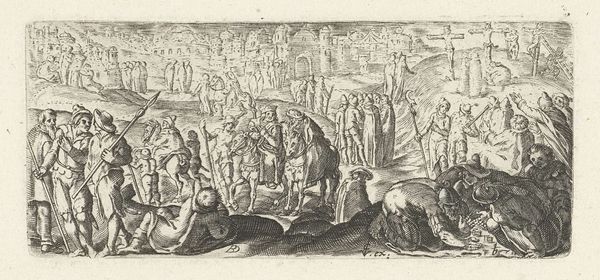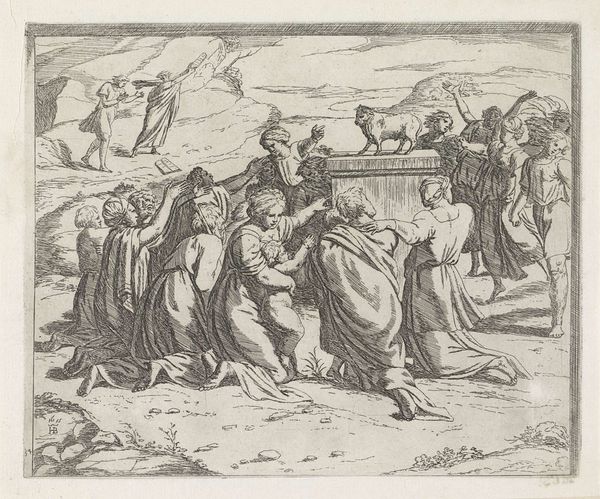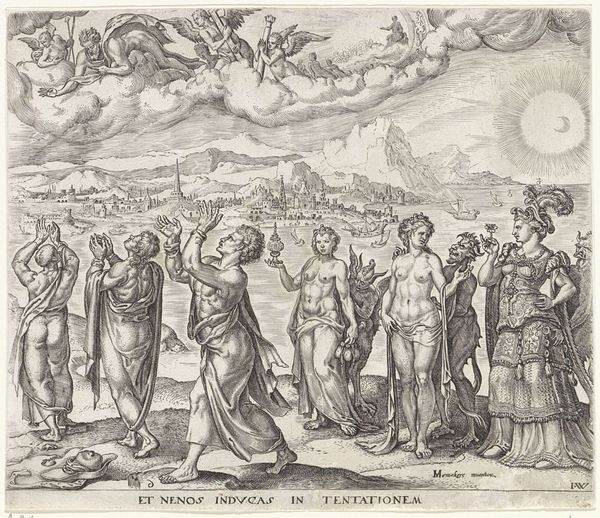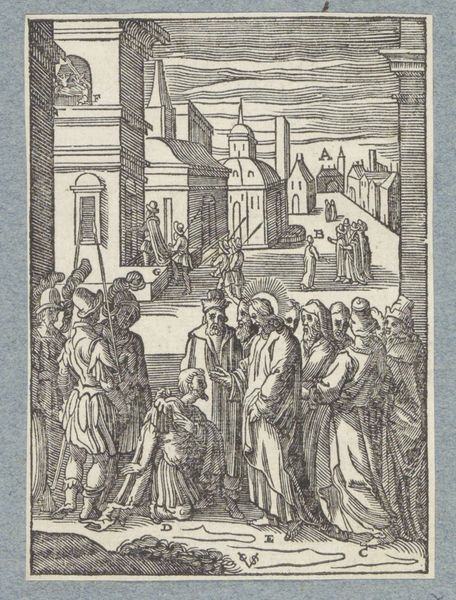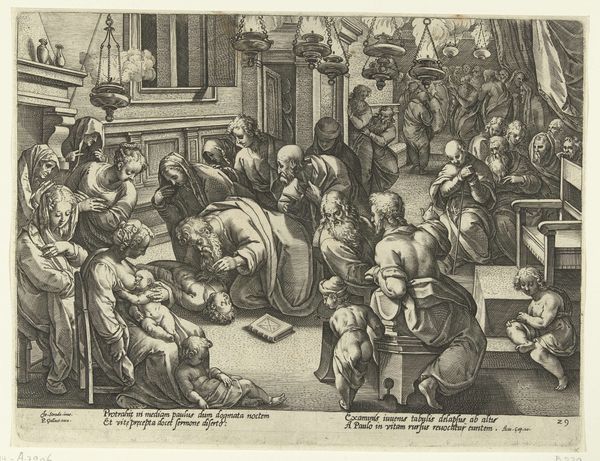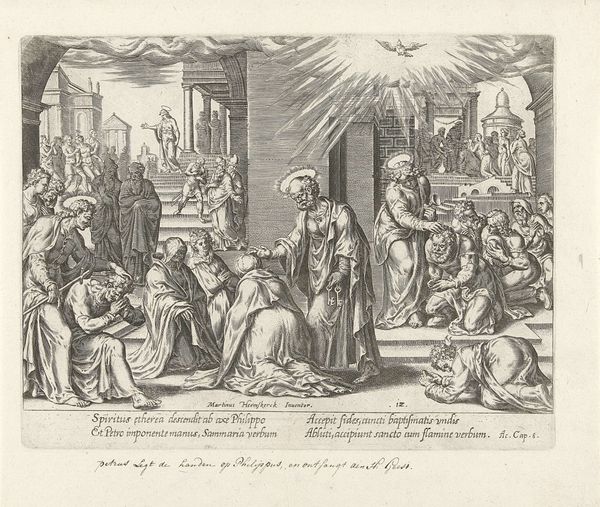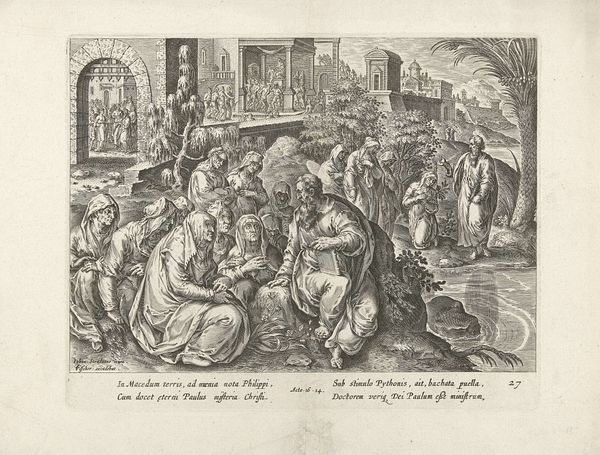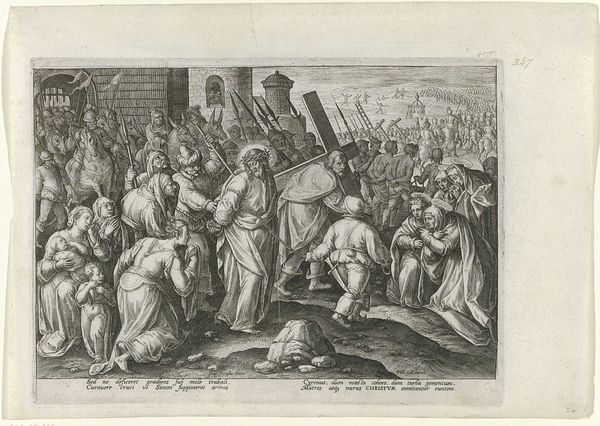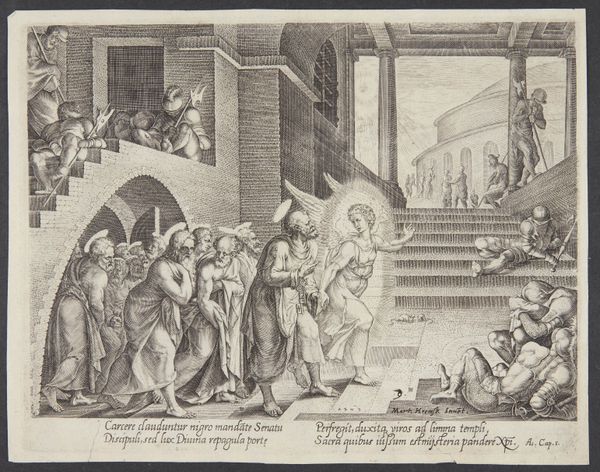
drawing, print, paper, ink, engraving
#
drawing
#
narrative-art
#
pen drawing
# print
#
perspective
#
figuration
#
paper
#
11_renaissance
#
ink
#
line
#
genre-painting
#
history-painting
#
northern-renaissance
#
engraving
Dimensions: height 102 mm, width 228 mm
Copyright: Rijks Museum: Open Domain
Curator: This detailed engraving, titled "Genezingen van Christus," or "Healings of Christ," is attributed to Pieter van der Borcht I, likely created sometime between 1582 and 1717. You can find it here at the Rijksmuseum. Editor: My immediate impression is of incredible miniaturization and industry! Just look at how much narrative is packed into this relatively small rectangular space. The lines are so fine; it gives the whole piece a shimmering, active quality. Curator: Indeed. The engraving shows several episodes of Christ's healing ministry unfolding across the image. Notice how the artist uses architecture and landscape to separate the narratives, almost like frames within a frame, emphasizing distinct moments. Editor: Precisely! And consider the labor involved. Each line painstakingly etched to create depth and texture. It reminds us of the artisanal skill foundational to printmaking and how important this was in disseminating religious imagery and teachings. Curator: The symbols are fascinating. Take, for example, the architectural details, and the city skyline at the top. They remind the viewer of both earthly space, and the heavenly promise. See how that architectural framing creates both earthly and divine dimensions within a single image? Editor: I agree; it’s interesting how he uses linear perspective, not quite perfectly, to guide the viewer’s eye through the different scenes, each a little production in its own right. And consider the audience; this print was likely consumed in multiples and served both a didactic and devotional function for a broad, less affluent public. Curator: The power of reproducible imagery lies there, it allows the sacred narratives to permeate everyday life, and create communal, shared experiences with visual forms. I find this particularly remarkable here, seeing that the focus of the image is on healing and miracles. It transmits a hopeful and accessible version of religious stories to a broad audience, uniting them in faith. Editor: The sheer volume of labor suggests a complex system of production and consumption that deserves appreciation. Thinking of the unseen hands and their skills enhances our view of not only artistic merit, but material and social context as well. Curator: Viewing this print has renewed my appreciation for how effectively symbols create continuity. Visual motifs work through epochs, preserving ideals, memory, and collective faith. Editor: For me, this work illuminates how artisanal skill combined with efficient dissemination facilitated profound societal shifts in faith and aesthetic experience.
Comments
No comments
Be the first to comment and join the conversation on the ultimate creative platform.

